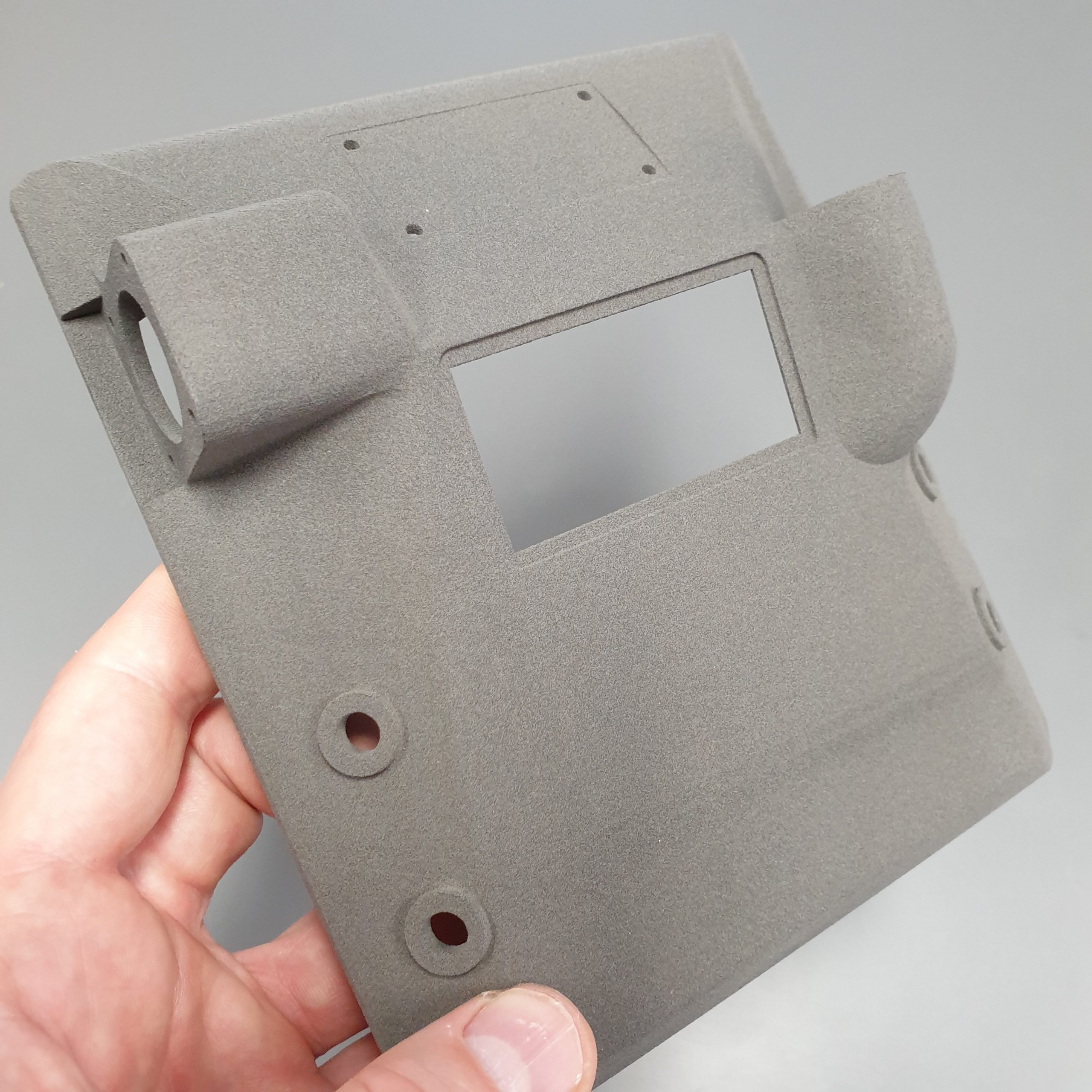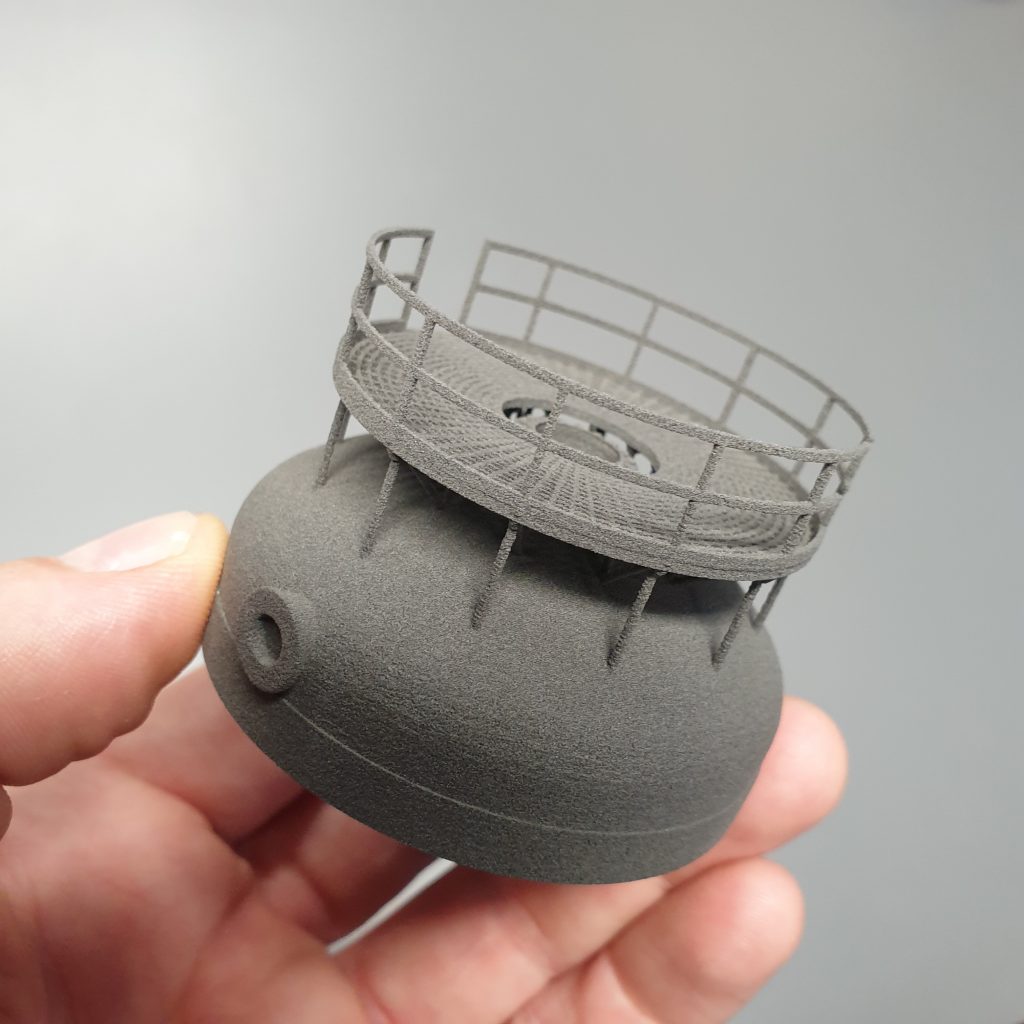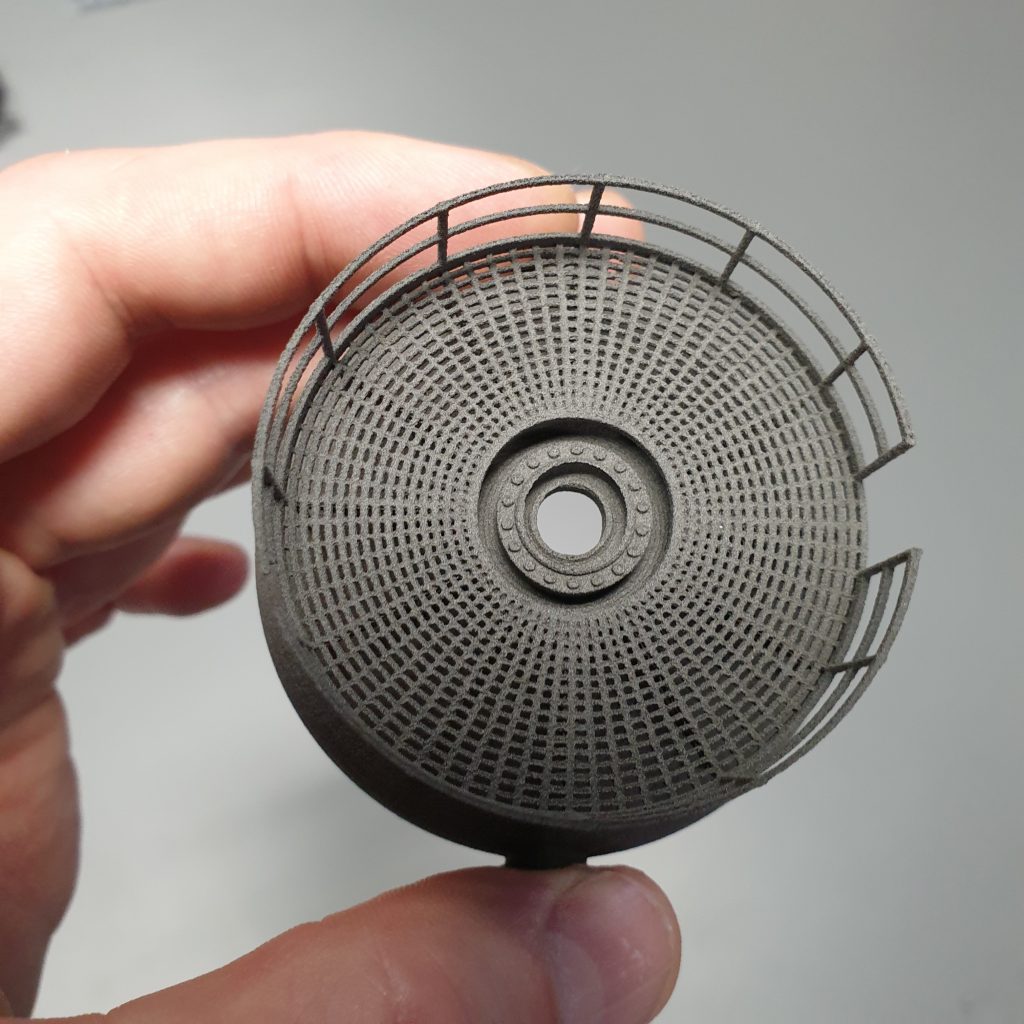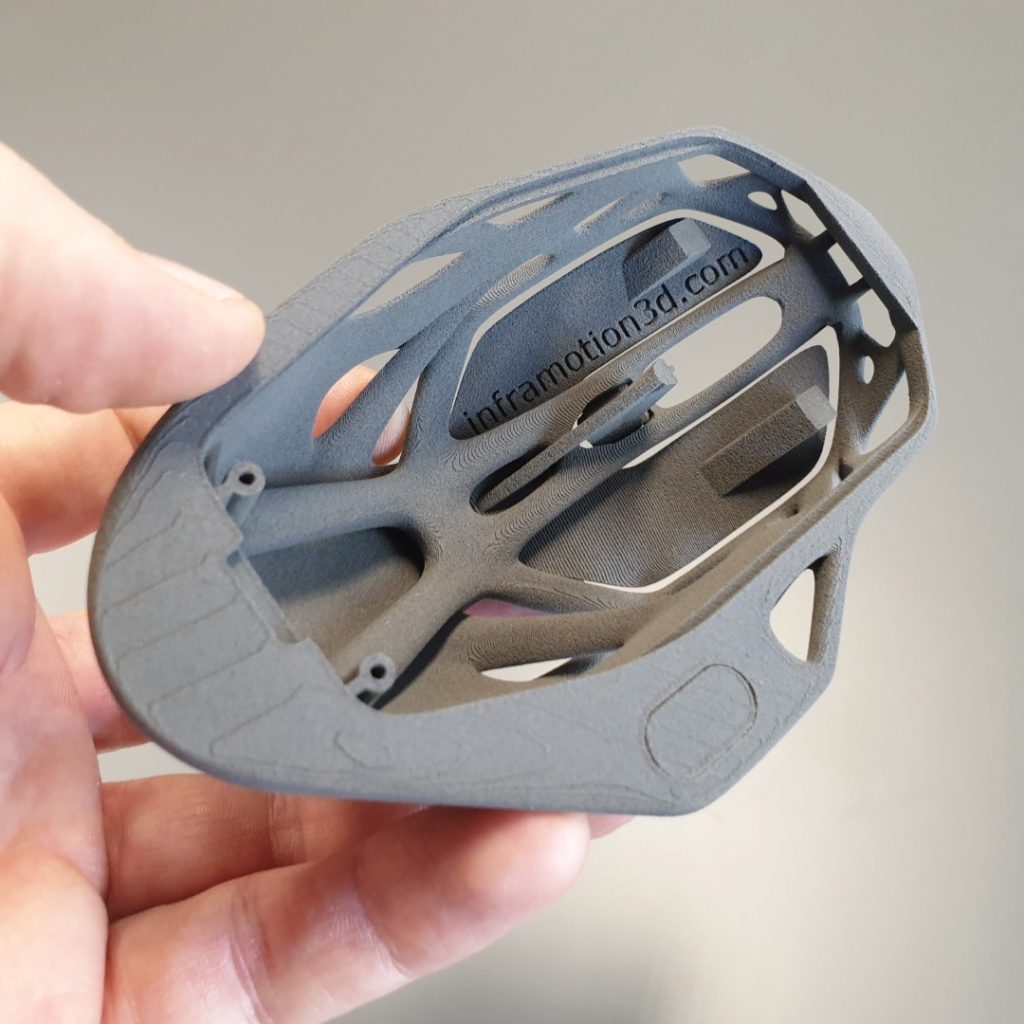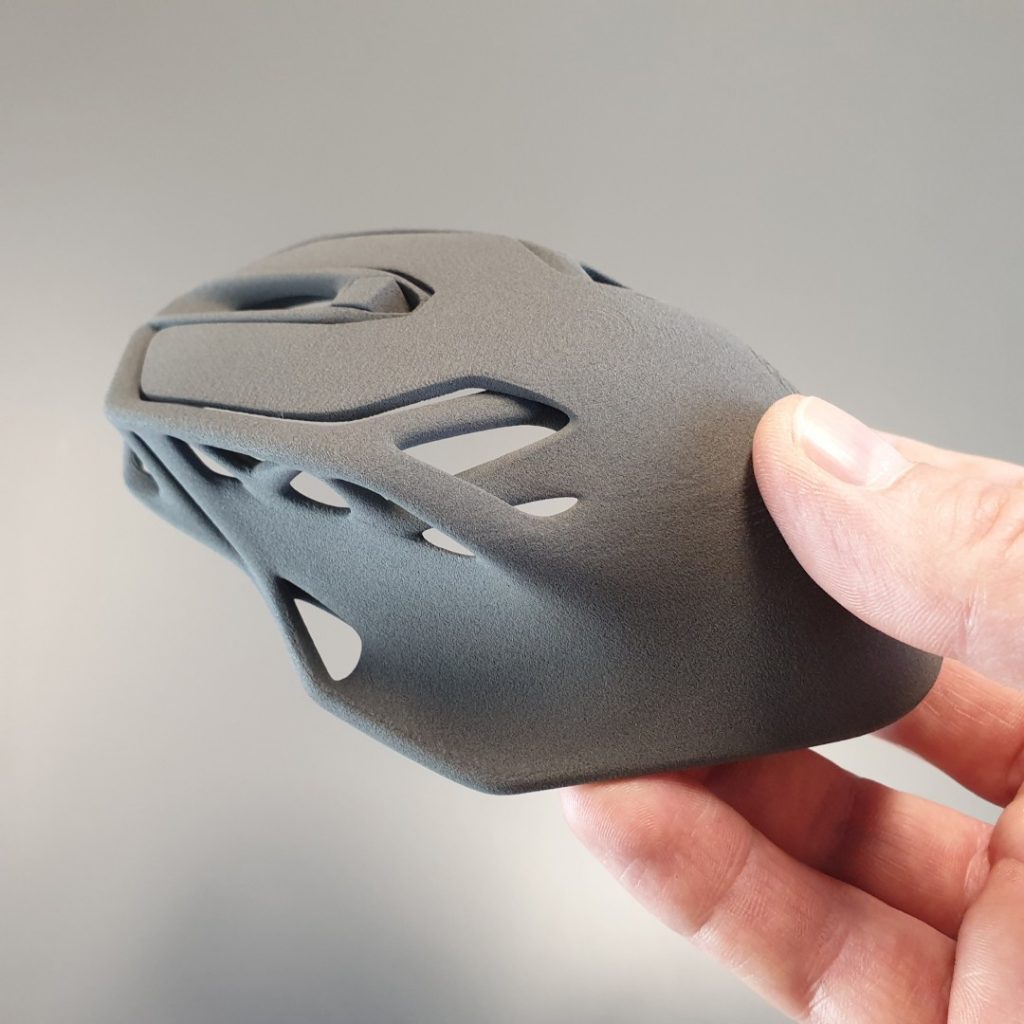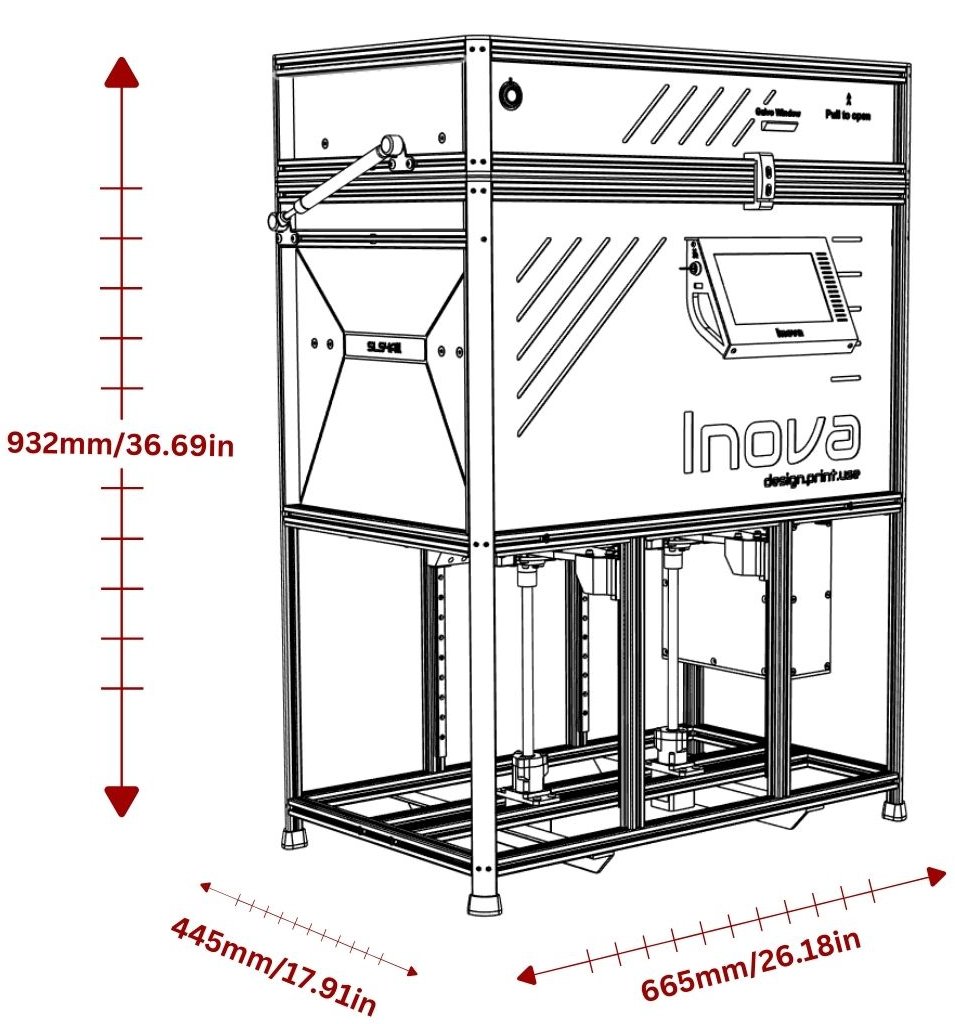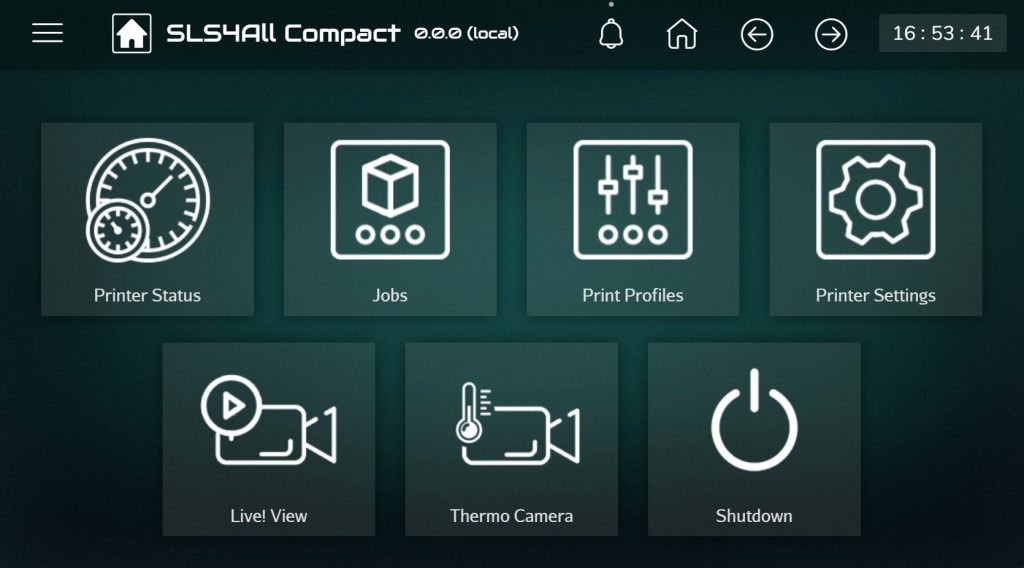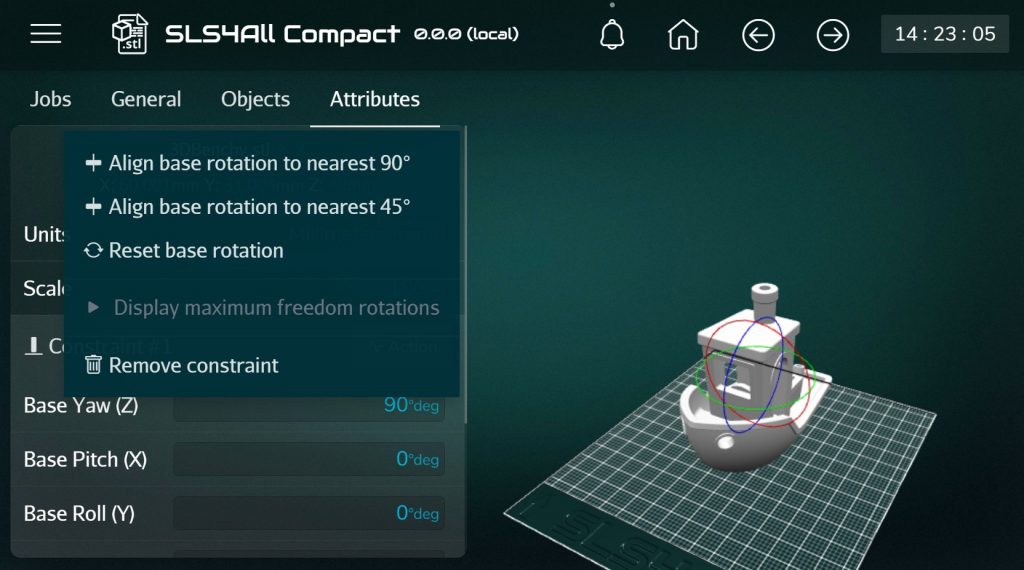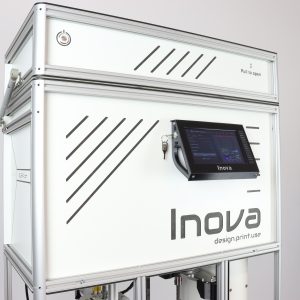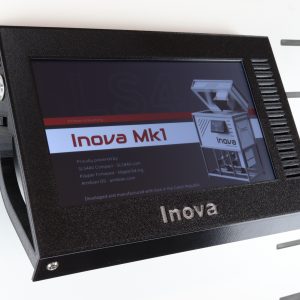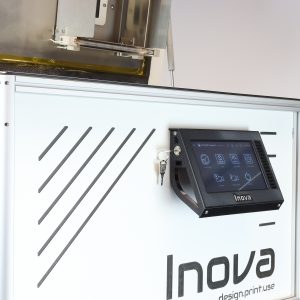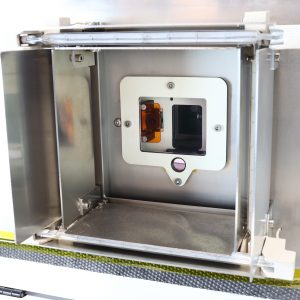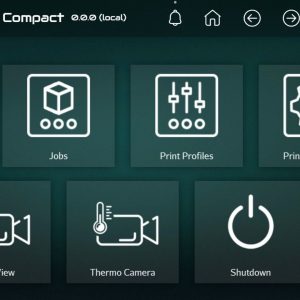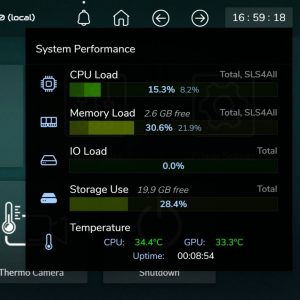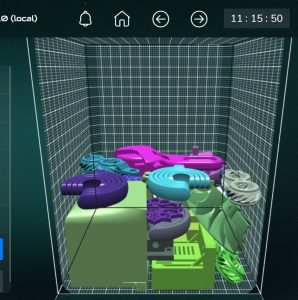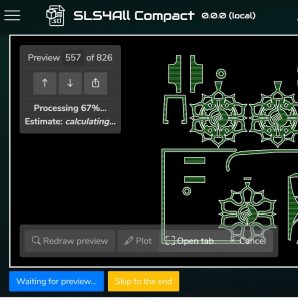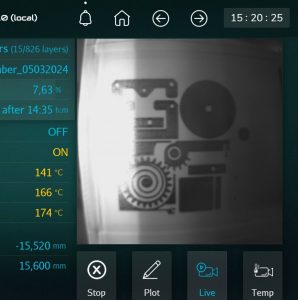Affordable Industry Level 3D Printing
The Inova MK1 makes SLS 3D printing truly accessible. Are you a small business, research institute, educational facility or just 3D printing enthusiast? Treat yourself to the industrial quality 3D printing.
Effectiveness of Rapid Prototyping
Reduce development costs, speed up the development cycle and be first to market. Stop depending on 3D printing services and keep your know-how in house.
Easy Production of End User Parts
Print durable 3D parts that can be used as a final product. If you require high strength, temperature or chemical resistance, selective laser sintering technology is the right choice for you.
Outstanding Print Quality
Uniform surface with difficult-to-distinguish print layers, no need for supports, high strength and dimensional accuracy even for geometrically very complex parts. These are some of the benefits of SLS printing that other 3D printing technologies cannot offer. Look at the real example printed on Inova MK1.
Unlimited Freedom of 3D Design
Forget the limiting design rules of 3D printed FDM or SLA parts. Only SLS offers true design freedom, as no supports are needed for printing. The part is supported by the surrounding non-sintered powder during printing, taking gravity out of game.
Forget the limiting design rules of 3D printed FDM or SLA parts. Only SLS offers true design freedom, as no supports are needed for printing. The part is supported by the surrounding non-sintered powder during printing, taking gravity out of game.
Inova MK1 - SLS Printer For You
Scanning Speeds in Meters per Second
Inova MK1 uses galvanometers to ensure the movement of the laser beam. This will give you an order of magnitude higher scanning speeds compared to the classic Cartesian XYZ or Core XY approach.
The average scanning speed when the laser is activated is around 2,800mm/s, or just under 3m/s. Speed of movements when the beam is switched off (move between sintered sections) is then several times higher.
Surprising Performance in Compact Package
Inova MK1 delivers you print quality comparable to industrial machines, but in a compact package.
Dimensions of the printer are just 665 x 455 x 932 mm (26.18 x 17.91 x 36.69 in) with a total weight of approximately 55 kg/121 lbs.
Total build chamber volume equals to 177 x 177 x 200mm (7 x 7 x 7.8 in). Effective build volume for PA12 Nylon is 150 x 150 x 180mm (5.9 × 5.9 × 7.1in).
All-in-one Firmware & Software Package
All of the FW/SW components like Low level printer firmware (based on the Klipper), Complex printer management and control software, Automated nesting solution, Slicing features optimized for SLS 3D printing were developed and optimized for efficient SLS printing and run directly on the printer.
This is a unique approach where no external PC is needed.
Print Process Under Control
Thanks to the large 7in touchscreen, you are always in control of your print jobs. The built-in video camera allows you to safely watch the sintering process in progress.
You can count on built-in remote network access for seamless connectivity. Simply connect the printer to your network via WiFi or Ethernet and you can fully monitor and control it remotely.
Safety at First Place
The Inova MK1 has many security features at both software and hardware level.
The basis is precise temperature and overheating control on the SW side. Another set of safety features is aimed at protecting you from unintentional triggering of the laser module.
Printer is further equipped with a completely independent hardware watchdog monitoring the key components functionality.
Low Energy Consumption
Although the printer is equipped with a powerful heating system, you don’t have to worry about consumption. The average consumption during printing is around 450W.
For its operation, we recommend a dedicated 10A circuit at 220-240V mains voltage or 15A at 110-120V. The maximum peak power consumption is limited directly in the printer settings.
Click to see more details
- Common layer thickness: 100µm
- Laser source: 10W blue diode laser, 450nm
- Laser spot size: approx. 350µm
- XY axes control: Galvo scanner
- Z axis control: Nema17 Stepper Motor and Ball Screw
- Build chamber volume: 177x177x200mm (6.3 liters) / 7x7x7.8in (382.2cu in)
- Effective build volume for PA12 Nylon: 150x150x180mm (4.1 liters) / 5.9×5.9×7.1in (247.2cu in)
- Printer dimensions: 665 (width) x 455 (depth) x 932 (height) mm / 18 (width) x 17.91 (depth) x 36.69 (height) in
- Printer weight: approx. 55kg / 121lbs
PRINT SPEED
- Pre-heating time: <45minutes for 230V version, <75minutes for 110V version
- Average scanning speed: 2,800mm/s (at packing density 25%)
- Print speed: approx. 9mm/hour at 25% scanning density at layer height 100µm
- Cooling time: 30-50% of the print time
FIRMWARE & SOFTWARE
- FW and SW: SLS4All Compact integrating - Low level printer firmware (based on the Klipper), Complex printer management and control software, Automated nesting solution, Slicing features optimized for SLS 3D printing
- User interface: 7inch touch screen display for complete control of the printer – from setting the printer up, uploading models, nesting, slicing, printing itself and maintenance monitoring.
- Remote control: complete, via browser
- SLS4All Compact updates: via internet using „one-click“ procedure
SAFETY
- Precise temperature and overheating control on the SW side
- Automatic firmware shutdown in case of any heater or temp sensor failure
- Completely independent hardware watchdog monitoring the key components functionality.
- Visual control of the print: 5MP on-board camera
CONNECTIVITY
- Wi-Fi
- LAN
- USB
POWER SUPPLY
- Possibility to choose from 110-120V or 220-230V version
PRINT MATERIALS
- Plastic polymer's powders ONLY. Not for metal powders.
- PA12 Nylon based SLS powders
- TPU based SLS powders
- Whatever you want to try with melting point up to 200°C
DOCUMENTATION AVAILABILITY
- Documentation regarding all mechanical parts and components is available.
- Documentation regarding the proprietary printed circuit boards (GATE1 and ZERO1) is available.
- Binary form of the SLS4All Compact is available.
- Source codes of the SLS4All Compact are published gradually.
CUSTOMIZATION POSSIBILITIES
- Even without the source code you have extensive configuration possibilities advanced development features, custom print material settings, print chamber shape modifications, heating settings, stepper and galvo settings, etc.
- Frame construction is designed to be easily upgraded or customized.
PARTS AVAILABILITY
- Key electronics and optical components of the printer are proven, well reputable and commonly available parts which is easy to buy and replace.
LICENCING
- All resources will gradually become an open source but may only be used for non-commercial purposes. This means that you will not be allowed to produce and sell Inova printers or its parts. See the full text of the Licese agreement.
Choose Your Preference
FULL Set Of Parts
or
DIY Set Of Parts
Full set of parts contains all components to assemble the Inova MK1 printer and it is the easiest way to get your own SLS printer.
It contains everything from mechanical components through, electronics, optics to wire bundles, insulations, tools, etc.
This is the #1 option for those without a lot of free time and no direct access to the CNC machining, 3D printing and other technologies needed to manufacture all the parts.
DIY Set of Parts is for the people who want to make Inova 3D printer completely by themselves. This set includes all the electronics, optics, linear technics and the heating elements for your DIY Inova build – see full list of included parts here.
This set does NOT include machined parts like profiles 2020, aluminum sheets and HPL sheets. It also does NOT include 3D printed parts, fasteners, wires, insulations etc. It will be your job as a DIY builder to buy respective materials and make these parts.
What our customers say...
Nicholas D., US, Full Kit, shipped 11/2024
I couldn’t wait to order the SLS4All SLS 3D printer when I first discovered it. I have been working with 3D printing for years with FDM, DLP, and SLA printing but SLS has always been the holy grail for me. I’d been searching for various printers on the market and had decided that unless I …
Gábor F., Hungary, Full Kit, shipped 04/2025
I’m very satisfied with the printer. Honestly it’s better then I expected. Tomas and Pavel are super supportive guys. They are always ready to help not just during the building but afterwards as well. I spent a long time wondering whether to order the machine. In the end, after following Shawn’s assembly process on YouTube, I was …
Thomas R., Austria, custom build 12/2024
When I first saw the SLS4All project, it was immediately clear to me: I wanted a printer like that! However, since the kit wasn’t available at the time, I decided to build the project completely myself – without a kit, using only my own initiative and know-how. I manufactured all the parts, plates, and aluminum …
Shawn M., US, Full Kit, shipped 11/2024
I was one of the early adopters of the SLS4ALL full kit. I was really impressed with how well this was packaged and arrived undamaged to the US. The kit had everything I needed to build; tools, hardware, lubricants and sealants, etc. Everything was boxed and labeled ready to go. The on-line video assembly instructions …
No Previous Experience Needed
No previous experience with SLS technology is required to build and operate the Inova MK1. For detailed build instructions, check out our INTERACTIVE INSTRUCTIONS and video series from our community.
Don’t forget to see our video showing in detail the operation of the printer.
Comprehensive customer support is available via Discord, email or phone.
FAQ - Frequently Asked Questions
----
Orders before 1 Aug 2025
We manufatured our FULL kits in batches where each batch was defined by size, fixed deadline for orders and fixed delivery date. Batches were opened on the monthly basis with the delivery in approximately 12-16 weeks.
You can order one of our kits or donate to support this project here.
Selective Laser Sintering is one of the 3D printing methods, which was explored and patented in early 80’s. It utilizes laser beam to sinter powder materials layer by layer together. As compared to FDM/FFF technology it is suitable mainly for the functional parts, like prototypes or small series end products. It is mainly given by the exceptional mechanical, chemical resistant and temp resistant features of the SLS printed parts.
No, it is quite different discipline. This printer is about to print plastic polymers.
It is the laser diode source emitting the laser beam within the blue spectrum (wavelength 450nm). We have tested two laser modules - with optical power of 5W and 10W.
It is approx. 250 microns for 5W laser with average scanning speed around 1,650 mm/s. For 10W laser is approx. 350 microns with average scanning speed around 2,800 mm/s.
No, it doesn’t. It uses simple optic lenses. At this moment Keplerian telescope optical arrangement is in place.
At this stage it is 150x150x180mm. Total print chamber volume is 177x177x200mm.
PA12 Nylon based SLS powders and TPU based SLS powders.
Whatever you want to try with melting point up to 200°C
100 microns
No, it is not. There are no health-risks but safety glasses, gloves and respirator are recommended.
Branded powders start at 100USD per Kg. Unbranded quality powders directly from manufactures at Alibaba start at about 55 USD per Kg (excl. shipping).
We started with counter rotating roller but moved to flat-bottom blade later.
Yes, it has 14 thermo regulation loops in total. Five for powder chamber, the same for print chamber and four for surface heating control.
Highly modified version of the Klipper Firmware running on BigTreeTech board SKR 1.4 Turbo and Raspberry Pi 4B (2GB RAM at this moment). Due to problems with the Raspberry Pi availability we have moved to the Radxa Rock Pi 4B, 4GB RAM, 32GB eMMC. Unfortunately it has annoying long-term stability issues. We therefore switched to the Raspberry Pi5 as soon as it was available.
It is our own proprietary SW called SLS4All Compact. It is implemented as the web-based app.
At this moment the STL, 3MF and OBJ formats are supported.
It can be connected to the network via ethernet or wifi. USB is also ready to use.
Do you have more questions?
Do not hesitate to contact us directly. We are ready to answer all your questions.
